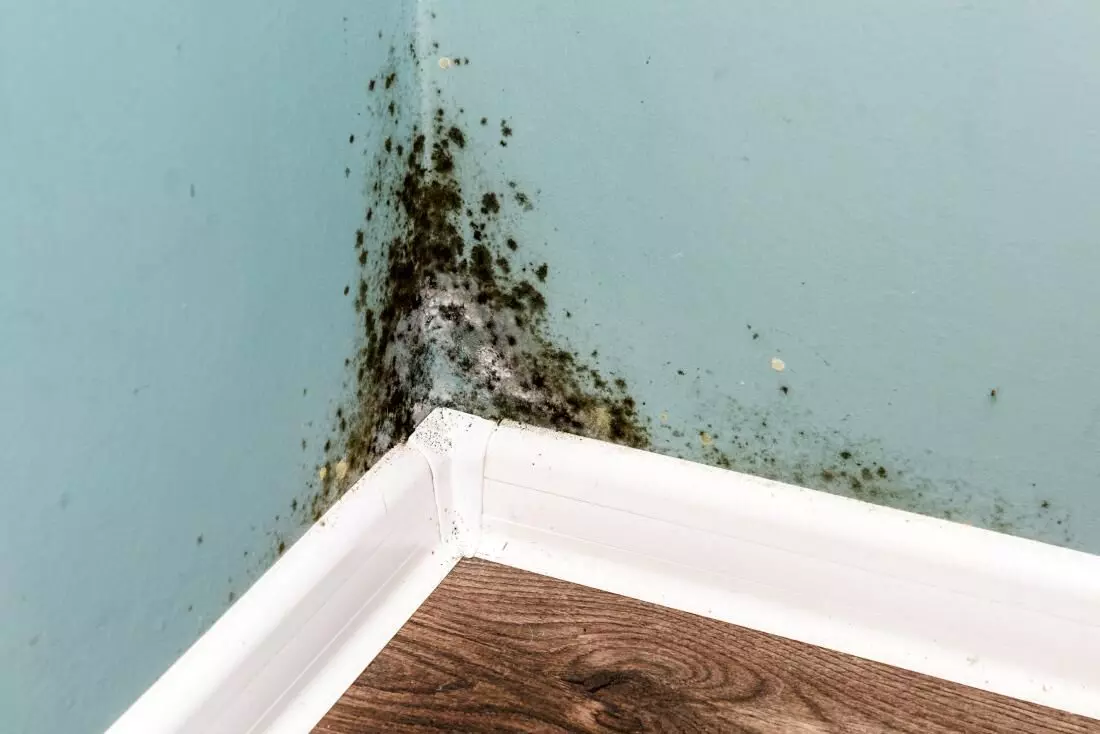- Home
- /
- Features/Spotlight
- /
- Mold: A lurking threat...
Mold: A lurking threat to health in comfy homes

It is usually, moist and most times comes in various colours including black, blue, black and white and green. It starts from the lower part of the wall stretches their way up.
Mold can occur inside or outside of buildings provided the area is damp, unventilated and has water problem which enables it to thrive.
It is worse during rainy seasons where some environments are moist for long periods of time.
Experts say the harmless looking mold is a form of fungus and constitutes a hidden threat to humans living in affected buildings because it can cause lung disorder and even death if left unattended to.
Those tiny spores could cause a host of health challenges; mostly in people with respiratory problems, allergies or a compromised immune system.
According to a microbiologist, Prof. Chinyelu Umeaku, shades more light on the dangers of living in a mold-infested house, saying that ‘’exposure to damp and moldy environments may cause a variety of health effects.’’
Umeaku is of the Department of Microbiology at the Chukwuemeka Odumegwu Ojukwu University Uli, Anambra.
She described the condition as bioaerosal, which experts say is an airborne collection of materials and can comprise bacteria cells and cellular fragments, fungal spores and fungal hypae, and viruses, among other elements.
“Human exposure to bioaerosols has been documented to give rise to a variety of adverse health effects.
“Building occupants complain of symptoms such as sensory irritation of the eyes, nose, or throat.
“It can cause neurotoxic or general health problems; skin irritation; nonspecific hypersensitivity reactions; infectious diseases; and odor and taste sensations”, she said.
Mr. Chike Obeke, a building engineer, blamed mold on an imbalance in the mixture of cement and sand during the construction of affected buildings due to unprofessionalism.
“The causes are most attributed to the type of plastering sand used for that purpose. Plastering sand that has mud repels the concentration and mixture of cement in a proper way.
“The mud starts to peel off after a while; the water splashed on the walls penetrates the paints and walls finishing; hence, mold develops after the wall has soaked much water during the rainy season.
“Most people don’t do a proper DPC while building; they just scrub the earth surface, which easily affects the wall surface,” Obeke said.
He advised that hiring an experienced building professional would help reduce the health hazards associated with moisture in homes.
Mr. Emmanuel Johnson, a resident of Durumi, a suburb in the Federal Capital Territory, Abuja, said he suspected that one of his friends lost his wife due to her exposure to mold.
“My friend’s wife had a respiratory challenge. One night, I suddenly developed shortness of breath and a seizure. She was taken to the nearby clinic but died after a few hours.
“It was a very scary and sad situation, as we could not figure out how the woman died because she was physically fit.
“But afterwards I noticed something that made me conclude that she died because of Mold. In their bedroom, it was very stuffy with less ventilation; the walls have been peeled off by mold.
“Again, I noticed that some of their clothes that are packed in the rooms are damp, and you can see some spores on some of the clothes,” Johnson said.
The Institute of Medicine (IOM) said there was sufficient evidence to link indoor exposure to mold with upper respiratory tract symptoms such as coughing and wheezing in otherwise healthy people.
The U.S.-based Institute of Medicine (IOM) is an independent, nonprofit organization that works outside of government to provide unbiased and authoritative advice to decision-makers.
Established in 1970, the IOM is the health arm of the National Academy of Sciences, which was chartered under President Abraham Lincoln in 1863, according to the organization's website.
To address the problem, it says ventilation was intended to remove or dilute pollutants and control the thermal environment and humidity in buildings.
“It must be sufficient either to remove pollutants and humidity generated indoors or to dilute their concentrations to acceptable levels for the health and comfort of the occupants, and it must be sufficient to maintain the building’s integrity”, it said.
By Buchi Onyejiaka




